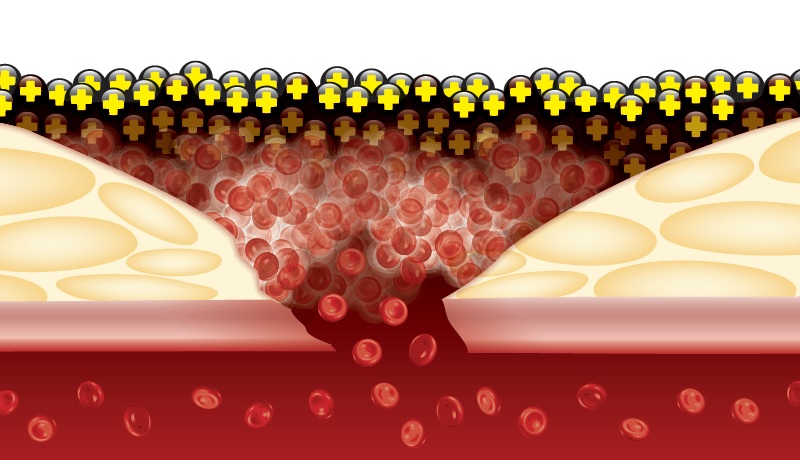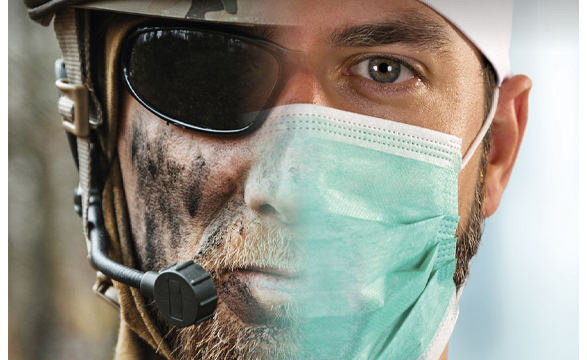Your guide to stopping catastrophic bleeding
Let's explore what Celox is, how to use it, and why medical professionals use it before we delve into its uses. In cases of catastrophic bleeding, time is crucial - a person can lose a critical amount of blood in just 3 minutes. Loss of blood is the leading cause of death following major trauma.
This is where Celox comes in. It is fast becoming the go-to treatment for the most severe trauma injuries, with the aim to increase the chances of survival. Police, Emergency Medical Services, Paramedics, First Responders and Military Professionals worldwide trust it.
Originally, Celox saved lives on the battlefield by stopping the most catastrophic bleeding in minutes. In civilian medical emergencies, treating bleeding casualties quickly and effectively is just as vital where time is critical. Medical responders use haemostats at the beginning of treatment, usually at the injury location and before hospital treatment.
Now, let's look at the Celox range in more detail. Haemostatic Dressings and Chest Seal Dressings split the range with different uses. Below we're explain in more detail on the various uses.
Haemostatic agents are dressings designed to stop external bleeding. This can include traumatic injuries from; gunshots, blasts or stab wounds. Haemostatic agents are also effective for use any in vehicle accidents or accidents involving power tools.
The range of haemostatic agents includes; Celox Rapid Gauze, Celox Granules and the Celox Haemostatic Gauze. Haemostatic agents quickly stop bleeding by packing the wound with gauze and clotting the affected area.
Chest seals are used for puncturing chest injuries. These work by sealing over the wound to prevent lung collapse that will lead to death through to lack of oxygen. This will also allow the medical responder to manage the situation when treating pneumothorax (fluid in the chest cavity) or haemothorax (blood in the chest cavity).
The chest seal range includes: the Foxseal Vented Chest Seal and the Foxseal Chest Seal. These provide a dependable treatment for open chest wounds in the most challenging situations.
1. What is Celox?
Celox stands for treating the most severe trauma injuries by providing innovative and reliable life-saving medical products. As an extremely effective haemostat granule, Celox has been extensively safety tested, produces no heat and is non-allergenic. This makes Celox the safe, proven choice. Approved by the BSI and a Class III CE Marked Medical Device.
2. What is Celox made from?
It is made of a proprietary composition which contains residual chitosan. Chitosan is a natural polymer extracted from shrimp shells and highly purified. This breaks down in the body naturally with no allergenic effects.
There have been no known or suspected allergic reactions as a result of using Celox since its launch in 2006. The use of chitosan has been extensively tested on individuals with suspected and confirmed shellfish allergies. None of the test subjects demonstrated any dermal sensitivity when tested against the chitosan material.
3. How does Celox work?
Celox granules are high surface area flakes. When they come in contact with blood, Celox swells, gels, and sticks together to make a gel like clot, without generating any heat.
It works independently from the body’s normal clotting mechanism and can clot hypothermic or even heparinised blood.
This mode of action has a number of major benefits:
- Clots hypothermic blood
- Clots blood treated with blood-thinning drugs (Heparin, Warfarin or Coumadin)
- No heat generated
- Easily removed from the wound

Works on hypothermic (cold) blood:
Severe traumatic blood loss quickly leads to the victim becoming hypothermic, irrespective of the outside temperature. Hypothermic blood is coagulopathic (does not clot normally) and so becomes harder to stop the flow of blood.
Because of the way Celox works, it is just as effective in stopping bleeding in hypothermic blood as it is in normal temperature blood. Independent comparative tests confirm this.
Blood thinners (anticoagulants) and anti-platelet therapy:
Celox Granules work even where there is Heparin or Warfarin (Coumadin) in the blood. An increasing number of people are on anticoagulants, presenting an extra challenge if they are severely injured. Independent comparative tests confirm Celox clots heparinized blood.
Note: Further independent laboratory tests have been published using Celox on blood containing heparin or warfarin. For more information on testing, please visit Celox Medical.
4. How is Celox used?
Celox use is easy to use. Simply Pour, Pack and Press.
- Pour on to the area of the wound
- Pack any cavity with either granules or gauze
- Press. Compress the wound to push the Celox into place and stop blood flow for a short period while the Celox clot develops and strengthens
The amount of time and pressure required depends on the pressure at which blood is coming out of the body. For life-threatening bleeding, apply strong pressure for:
- 1 minute with Celox Rapid
- 3 minutes with Celox Gauze
- 5 minutes with Celox Granules
If a wound starts to re-bleed, apply and hold with firm pressure for longer. If you suspect Celox is no longer contacting the area where the bleeding is coming from, then remove and apply a fresh pack. Additional packs can be used if required.
5. Celox expiry dates
Each product pack is marked with an expiration date.
- Celox Granules 15g - 4 Years from manufacture
- Celox-A Applicator - 4 Years from manufacture
- Celox Gauze - 5 Years from manufacture
- Celox Rapid - 5 Years from manufacture
6. Where to buy Celox?
Medisave stocks the entire Celox Range. Take advantage of extremely competitive pricing and Next Day Delivery if ordered online before 8pm.
Shop the range online, contact us at hello@medisave.co.uk or freephone 0800 804 6447.

